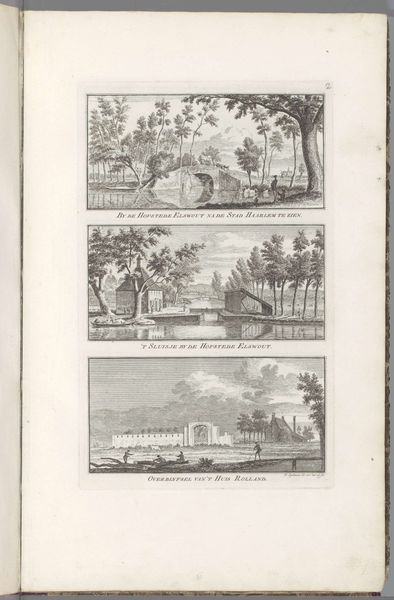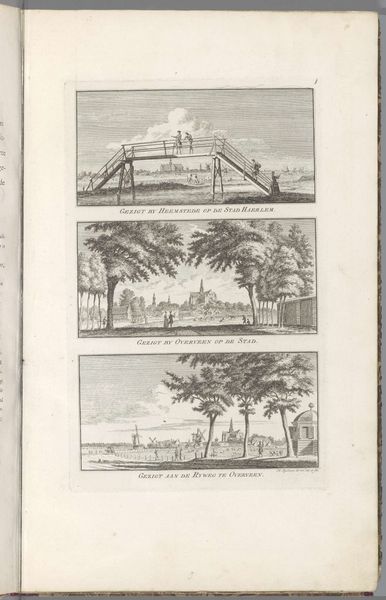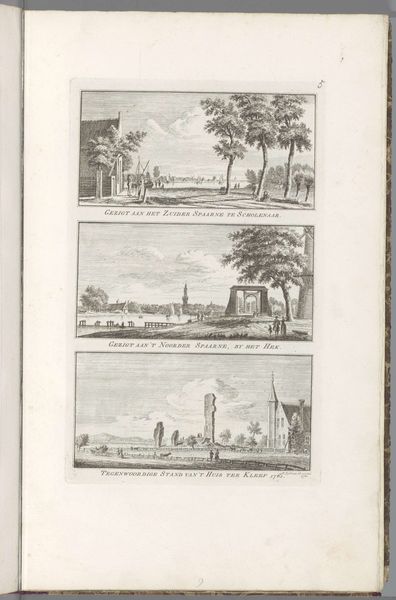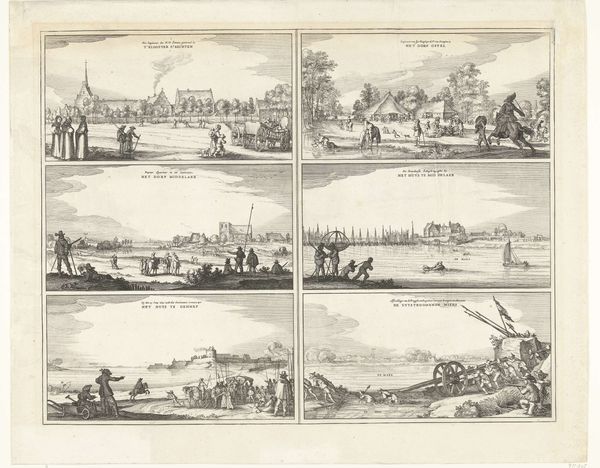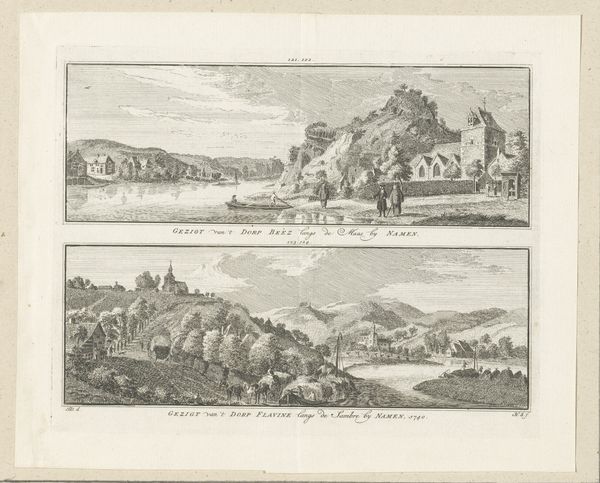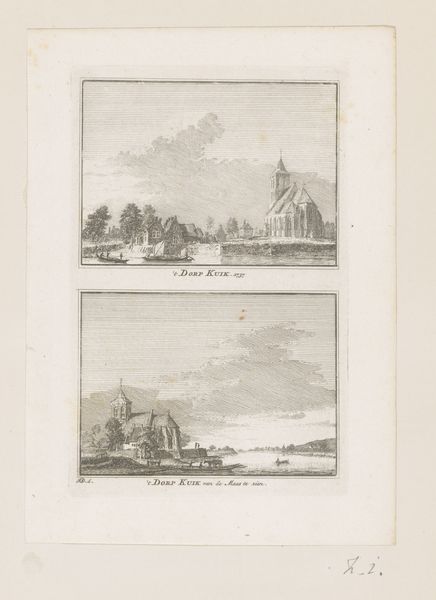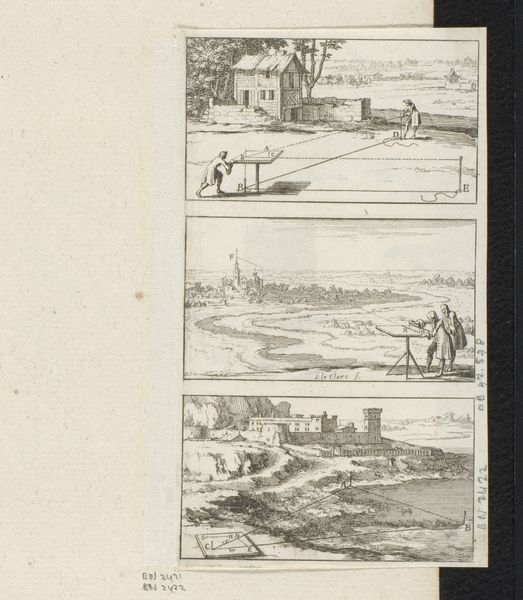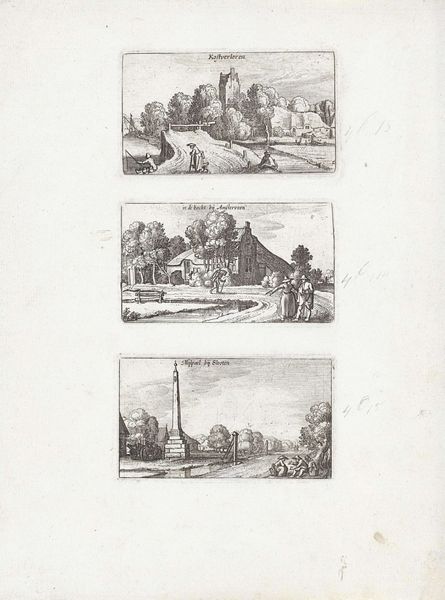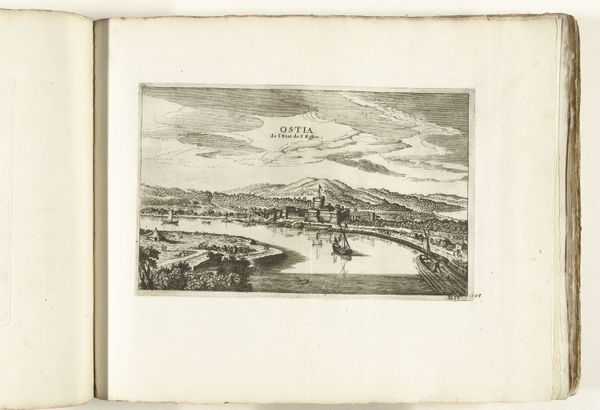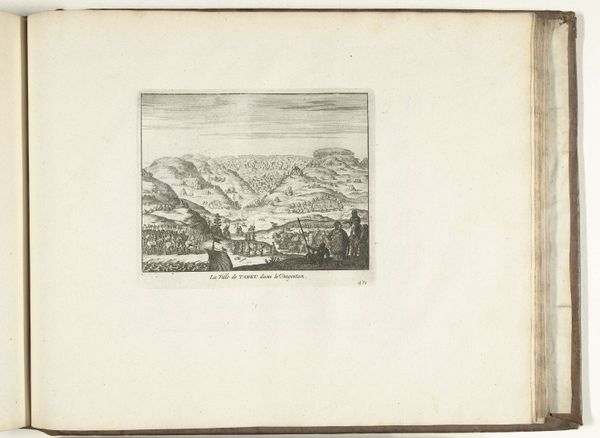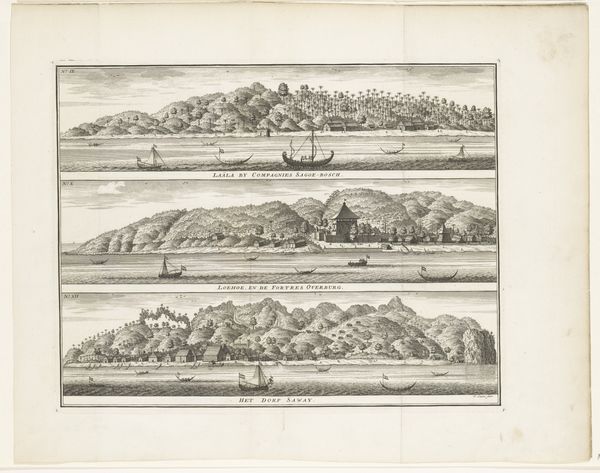
Gezichten op de Nieuwe Brouwerskolk en Kraantje Lek te Overveen 1761 - 1763
0:00
0:00
Dimensions: height 294 mm, width 186 mm
Copyright: Rijks Museum: Open Domain
Curator: Here we have a fascinating print from between 1761 and 1763 titled "Gezichten op de Nieuwe Brouwerskolk en Kraantje Lek te Overveen," by Hendrik Spilman. It's an etching that captures different views of Overveen. Editor: My goodness, it's like peeking into little worlds. Each section tells a different story of the same place, but they are surprisingly different in mood and scale. The topmost view with the water is rather serene, while the others give me more of a lonely, windswept feeling. Curator: Exactly. Spilman offers us not just a depiction of the landscape, but also a commentary on the evolving relationship between humans and nature. He uses the conventions of the Baroque style to do so. These images, displayed together, create a layered understanding of Overveen. Consider how landscape became a significant way to frame civic identity during this era. Editor: I see what you mean. In the first view, it's as if nature is merely a backdrop for these fashionable folks enjoying their day at the waterfront. Whereas in the views beneath, we humans look insignificant against the backdrop of hills and sky. I almost feel the wind and smell the earthy scents coming off the page. Do you suppose these were intended as mementos for travelers, to bring back some wind-swept feeling into their parlors, or more as scientific observation for scholars? Curator: A bit of both, probably. Prints like these circulated widely, contributing to a sense of place for both locals and those who might never visit. They are definitely not photo-realistic so we must consider these prints as marketing materials, promoting the features and the natural riches of the surrounding regions of Haarlem. These idealized landscapes played a role in shaping the developing ideas of the Netherlands itself, even as cities were increasingly influencing the social and economic landscapes of the country. Editor: It's such a tiny thing, really, this etching. You could lose yourself in each separate panel if you were of a mind to dream for a moment. There’s something so appealing to how simple it all is. The rolling dunes, the small houses. What was Spilman hoping we’d take away from gazing upon this trio of local scenes? Curator: Perhaps he wanted viewers to see not just the surface beauty, but also the interplay of human impact and enduring nature that defined the area. Editor: Maybe he just wanted us to pause, breathe it in and ponder. Like we just did now.
Comments
No comments
Be the first to comment and join the conversation on the ultimate creative platform.
